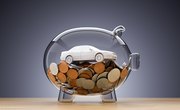
Leasing a car is popular because it usually results in lower down payments and lower monthly payments during the lease term when compared to buying a car and taking out a loan. However, getting out of a car lease early can be difficult and expensive.
If you buy and finance a car and later experience financial hardship, you can usually sell the car for enough to pay off the loan, or come close to it. Car leases, on the other hand, are binding agreements for the full term of the lease with little flexibility for changes and termination; it can be an expensive hassle to get out of one.
So, what are the options for getting out of a car lease?
How to Get Out of a Car Lease Early
Car lease agreements usually have several penalties for early termination. A few examples are:
- Paying fees for early termination
- Making all the remaining payments on the lease
- Covering the costs related to getting the car in condition for resale
- Paying any taxes due on lease payments
- Making up the negative equity between the residual value and current market price of your car
Before deciding how to get out of your car lease with the least financial damage, you will need to read your agreement to find out which penalties will apply to your situation. Are you in the early stages of your lease or is it nearly paid off? This can make a huge difference in the cost of an early buyout.
Read More: Returning a Lease Car Before the Lease Ends
Early Lease Termination
An early lease termination is usually the fastest and easiest way to get out of a lease, but it's probably the most expensive. It's simple because the leasing company will take care of all the details for you. However, it's expensive because you'll likely have to pay all the penalties and charges outlined in the lease agreement, such as vehicle disposal fees, taxes, parking tickets and transfer fees.
An early termination fee is normally the difference between the credit you get for the current value of your car and the remaining balance owed on the lease. The best way to find the exact amount of your termination fee is to contact the leasing company and get a calculation.
Early termination fees will be higher in the early terms of the lease because cars depreciate more rapidly at the beginning of the lease than later on. In fact, terminating a lease may cost so much that it makes more sense to keep the car and make the remaining payments for the full term of the lease.
Transfer Lease to Another Person
Transferring the lease payments to another person is a convenient method. In this case, you simply have another person take over your payments. You'll have to read the terms of your lease to find out if this method is permitted and whether it is legal in your state.
Some buyers who are looking for a short-term lease may be interested in taking over the remaining payments on your lease. These types of buyers could be looking to avoid the upfront down payment and the longer terms of a new lease from a dealer. They only need to lease a car for a few months.
You can find potential lessees on lease-trading websites like Swapalease.com or LeaseTrader.com. These websites will charge you a fee for listing your car, and you will also likely have to pay the leasing company a transfer fee. Nevertheless, these fees would probably be much lower than early termination fees.
This is probably the best way to get out of a lease. The downside to this approach is that you still may be technically obligated to make the remaining payments in case the new lessee defaults. Or you could be liable for any damages to the car and excess mileage charges.
Read More: How to Calculate a Residual MF on a Lease Payment
Buy Out the Lease
Most leases give you the right to buy your car at any time during the term of the lease. This could make sense if the resale value of your car is greater than the payoff or amount needed to buy out the lease.
For example, let's suppose you've already made three years of payments on a five-year lease, and according to your lease your car has a buyout price of $20,000. Buying the car and either keeping it yourself or reselling it only makes sense if the resale value is more than $20,000.
To find out if buying the car would work out, first contact the leasing company and get the payoff or buyout amount in writing. Next, find the current market value of your car at websites such as Edmunds or Kelley Blue Book.
Even if the sales value of your car is less than the payoff or buyout amount, this might still be one of the least expensive ways to get out of a lease. You'll still have to pay some related fees, but you might be in a better position than paying early termination fees or looking for a lease transfer to another party.
Sell Your Car to a Dealer
You can also buy out the lease and trade the car in at a dealership. However, be aware that the dealer will only pay you wholesale value for the car, which will be lower than if you sell the car yourself privately.
Read More: Do You Need a Credit History to Lease a Vehicle?
Buy a New Car Through the Same Dealer
Dealers like to sell cars, and if you go to the same dealership where you got your lease, the dealer may be willing to waive some of the penalty fees or at least reduce them. However, you still have to consider the payment of the penalty fees. Will you be able to pay these fees out of pocket, or will they get rolled into a new car loan?
For example, suppose you buy a new car for $30,000 and finance it for 100 percent but have to pay $3,000 in early termination fees to get out of your lease. In this case, you could wind up with a car loan of $33,000, leaving you “upside down” with negative equity on your new car before you drive off the car lot.
Getting out of a car lease is an expensive proposition no matter which way you go. Everyone's situation is different. You have to run the numbers on each alternative to find which method works best for you.
References
- CreditKarma: How Can I Get Out of a Car Lease Early?
- Carfax: 5 Ways to Get Out of a Car Lease Early
- Investopedia: The Best Way To Get Out Of Your Car Lease
- Reader's Digest: How to Get Out of a Car Lease
- Swapalease: World's Largest Lease Marketplace
- LeaseTrader: Lease a Car – Get Out of a Lease
- Kelley Blue Book: New and Used Car Price Values
- Edmunds.com: New Cars, Used Cars, Car Reviews
- Consumer Financial Protection Bureau. "What Should I Know About the Differences Between Leasing and Buying a Vehicle?" Accessed April 12, 2020.
- Merriam-Webster. "Lease." Accessed April 12, 2020.
- AARP. "To Buy or Not To Buy." Accessed April 12, 2020.
- Consumer Financial Protection Bureau. "What is a Manufacturer Suggested Retail Price (MSRP)?" Accessed April 12, 2020.
- LeaseGuide.com. "Capitalized Cost – Cap Cost." Accessed April 12, 2020.
- Autotrader. "Leasing a Car: Can You Negotiate the Price?" Accessed April 12, 2020.
- Edmunds. "The 'Residual Value' of Leasing." Accessed April 12, 2020.
- Federal Reserve. "Keys to Vehicle Leasing: Future Value." Accessed April 12, 2020.
- LeaseGuide.com. "Money Factor—Explained." Accessed April 12, 2020.
- Federal Trade Commission. "Financing or Leasing a Car." April 12, 2020.
- Federal Reserve. "Keys to Vehicle Leasing: End-of-Lease Costs: Closed-End Leases." Accessed April 12, 2020.
Writer Bio
James Woodruff has been a management consultant to more than 1,000 small businesses. As a senior management consultant and owner, he used his technical expertise to conduct an analysis of a company's operational, financial and business management issues. James has been writing business and finance related topics for work.chron, bizfluent.com, smallbusiness.chron.com and e-commerce websites since 2007. He graduated from Georgia Tech with a Bachelor of Mechanical Engineering and received an MBA from Columbia University.

